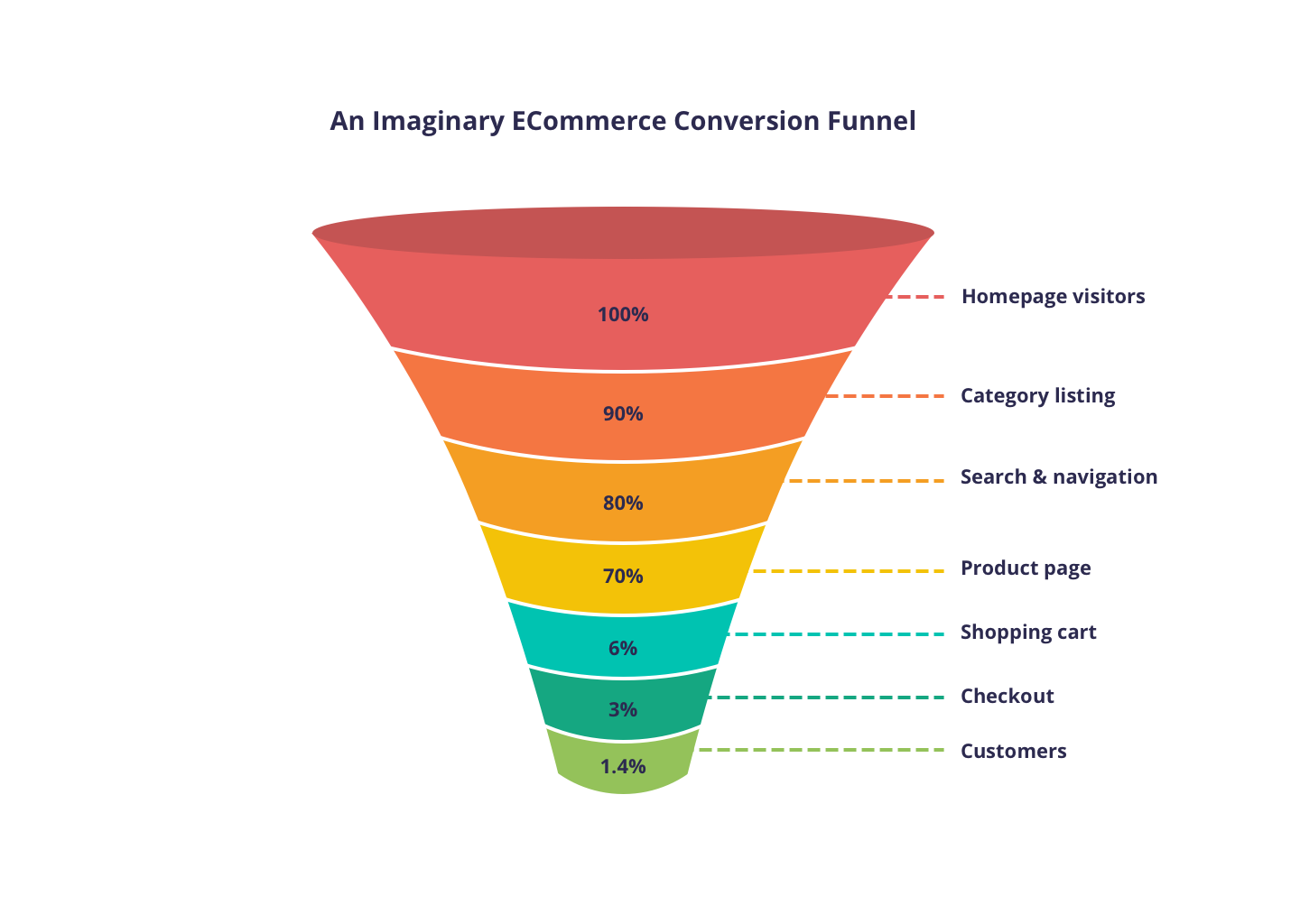Why Micro Conversions Matter5 min read
Reading Time: 4 minutesIn fashion eCommerce, there’s no One Metric to rule them all.
Modcloth co-founder Eric Koger in an interview with The New York Times said,
When I think about fashion, I think about numbers. Click To TweetCreative direction is crucial when you’re working in a field that’s as visual and subjective as fashion. But the other side of the coin is running a business which needs a ton of number crunching.
So data and metrics are a part of the package when you want to sell beautiful things online. And when we talk data in eCommerce, we’re talking conversions for a big chunk of the time.
- How many people bought something from the site today?
- How much are they buying? Two products per purchase? More?
- How much money are they spending?
All of these desirable end actions are related to the overall revenue goals of eCommerce businesses. It’s the light at the end of a shopping tunnel filled with rows and rows of dresses and shoes and bags.
In other words, they’re your macro conversions. They’re powerful numbers that every eCommerce business monitors with a hawk eye.
But consider this imaginary conversion funnel for a mid-size to large eCommerce company:

If there are a 1000 visitors coming to your store every day, about 30 of those shoppers may make it to a checkout page, and a mere 14 people* are going to leave with a purchase. The fact is, macro conversions only make up a tiny percentage of your actual traffic.
*Note: 1.4% is an eCommerce KPI benchmark reported by Moz. But in individual cases, for larger eCommerce stores, it ranges from 0.78% to 3%.
So what about the other 98.6%?
Should you ignore Jenna who’s looking for a suit for a business trip that’s 2 months away? What about Tim, who’s changed his mind about the orange shirt because it’s just not his color?
Or the thousands of people who love your products and keep coming back, but are not going to be purchasing from you every time they visit?
They are just as important as the 1.4% who convert. The breadcrumb trail of actions left by the non-converting 98.6% gives you a larger and more detailed picture of performance and what makes someone a repeat customer.
They may not buy this time, but they may read a review. Or click on a product. These seemingly insignificant actions called micro-conversions could ultimately lead to a sale.
As Google puts it, “micro conversions are activities that users frequently engage in before purchasing”. In an eCommerce store, it could be:
- Viewing a product page
- Clicking on the newsletter Subscribe button
- Engaging with product recommendations
- Reading a review
- Sharing on social media
- Clicking on a subcategory
Note that micro conversions don’t necessarily have to lead to a macro conversion, but macro conversions often happen after a series of micro conversions have taken place.
Micro Conversions and Fashion E- commerce
Let’s dip into eCommerce for an example. Nasty Gal is a fashion brand that’s equally touted by the fashion industry and by marketing moguls. Business of Fashion has an entire section dedicated to it. GrowthHackers has a study that attempts to dissect its marketing and business success.
Why? Because Sophia Amoruso has done something that all online fashion brands desperately want to recreate— building a strong emotional story around a business and converting that into paying customers.
And she does it easily with millennials who can switch between media platforms an average of 27 times per hour.
“Our customer doesn’t really differentiate between consuming content, shopping for something, and hanging out with her friends online. I just want to give her all kinds of reasons to hang out on Nasty Gal.”
— Sophia Amoruso, Nasty Gal
And ‘hanging out’ is exactly what close to 99% of people are doing on your site when they shop for clothes. They window shop online, they check Twitter and Facebook to see what’s trending, they make up their minds, they change it, they share and they expect good shopping experiences.
If the only metrics you’re measuring on a fashion eCommerce site are macro conversions, you’re already passé.
At Vue.ai, we focus on macro conversions but don’t underestimate how important micro conversions are for optimizing your product recommendations, your site, and your conversion funnel. So our data insights always focus on more than just the obvious by factoring in visual intelligence.
It brings in a whole different dimension to what you can measure. Things like what colors are being clicked on the most, what patterns does this particular person always add to cart, what kind of products does he click on when he gets a promotional email.
Granted, it’s harder and more laborious to measure micro conversions, but ultimately, the kind of valuable context it provides has made up for it manyfold. And as expected, these small actions do add up and reflect on our customers’ larger goals like add to carts, product views, and buys.
So ultimately, if you want to see the big picture you need to be tracking a judicious mix of macro and micro conversions.

